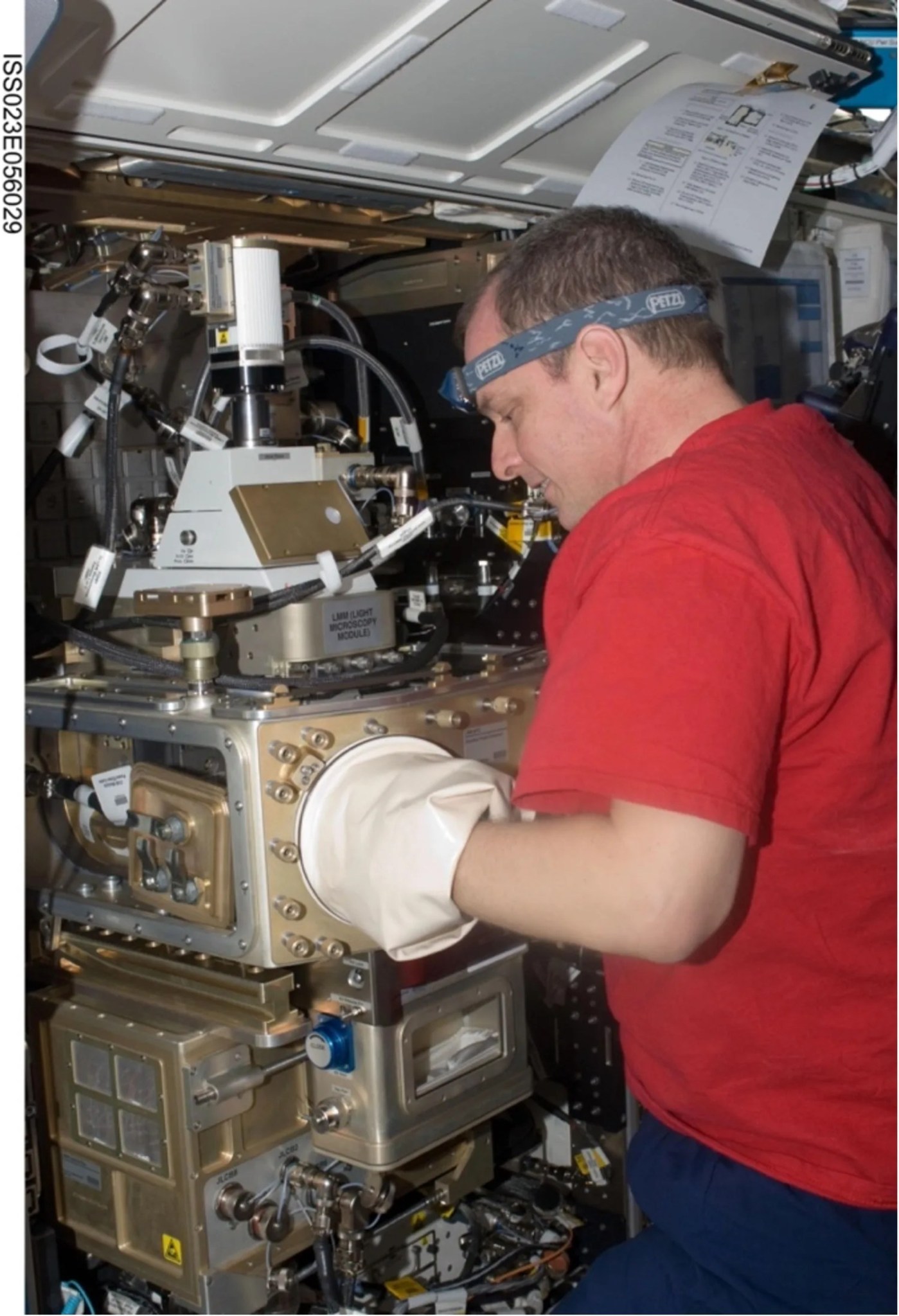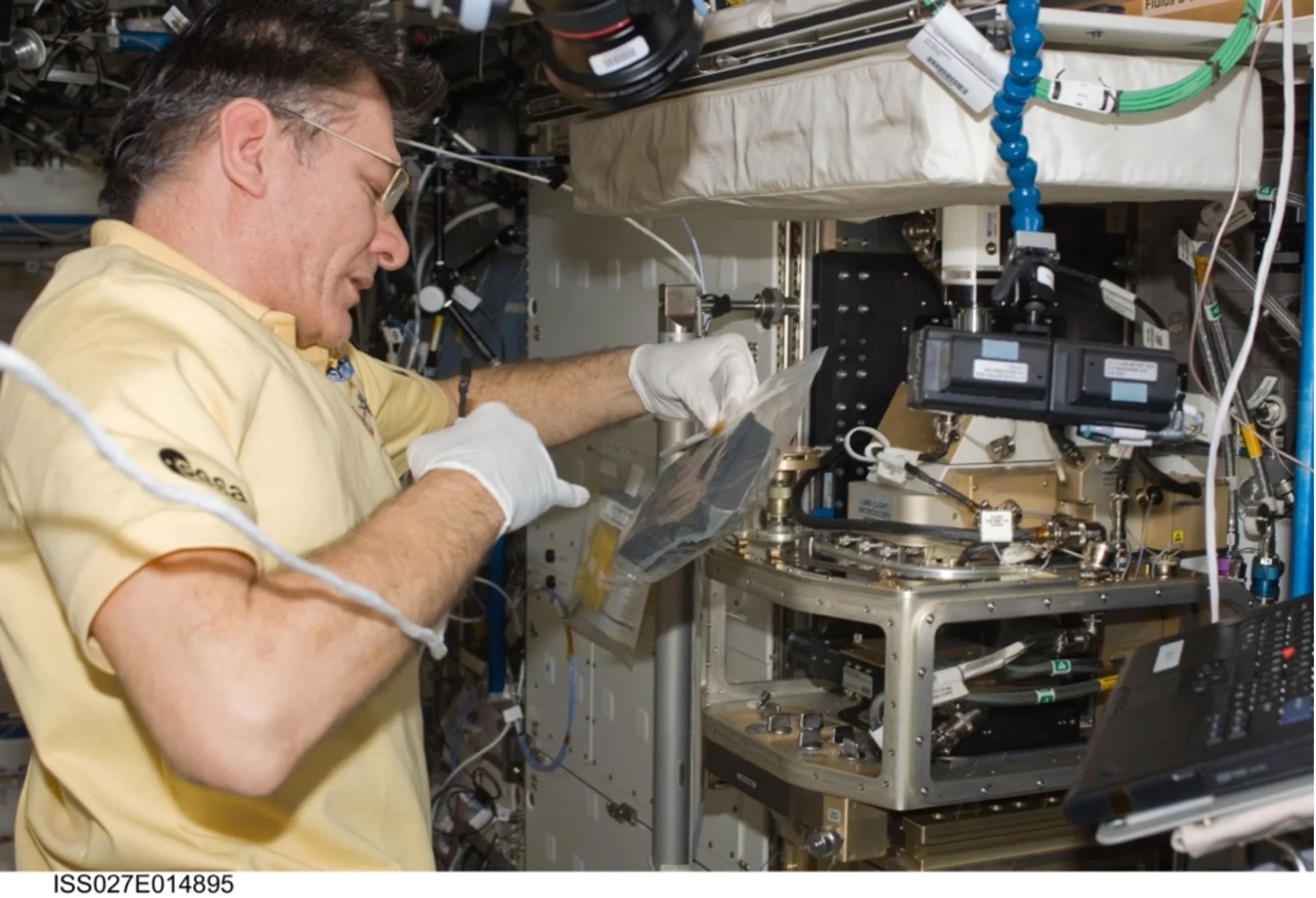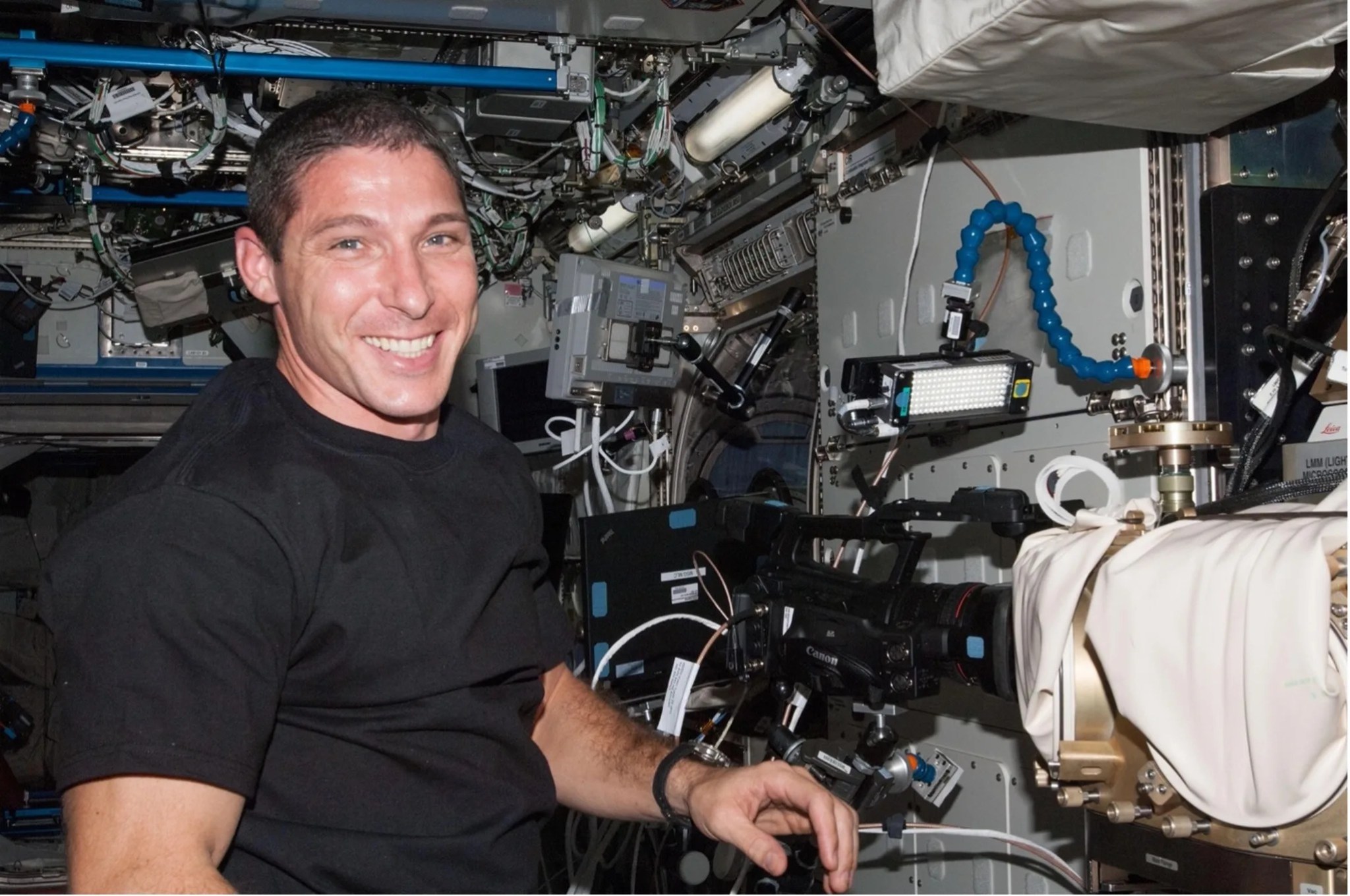Constrained Vapor Bubble-2 (CVB-2)
Science Objectives
Constrained Vapor Bubble-2 (CVB-2) uses a miniature heat pipe and a mixture of two fuels to investigate the physics and engineering of heat transfer systems. The investigation conducts basic research in thermodynamics, including heat transfer and the phenomena that occur at the boundary between two phases of matter. It also studies the effectiveness of heat transfer using the CVB heat pipe, a passive heat transfer system on the International Space Station.
Status
The experiment has concluded, and science is being evaluated.
Experiment Description
Constrained Vaper Bubble-2 (CVB-2) is a continuation of the original CVB investigation, where the goal is the study of thermophysical principles underlying change-of-phase heat transfer systems. In CVB-2 the effect of replacing a pure fluid (100% Pentane used in CVB) with a mixture (94% Pentane and 6% Isohexane in CVB-2) is observed. The study of the mixture will evaluate the effect of a modified liquid/vapor interfacial shear stress on fluid flow towards the zone of evaporation. Most liquids have a surface tension that decreases with increasing temperature. This phenomenon creates a flow in the direction of increasing surface tension, called "Marangoni Flow.” The temperature driven Marangoni Flow reduces the effectiveness of a heat pipe like the CVB because it keeps liquid from returning to the hot end. The use of a liquid mixture can mitigate this effect because the change in mixture composition with temperature opposes the change in surface tension with temperature allowing for liquid to keep flowing toward the hot end of the device. This should change the details of the basic evaporation and condensation processes operating in the cell.
Space Applications
Most liquids have a surface tension that decreases as temperature rises. This causes fluid to flow in the direction of higher surface tension, a phenomenon known as Marangoni flow. This reduces the effectiveness of a heat pipe because liquid cannot return to the hot end. CVB-2 investigates whether a mixture of two fuels (pentane and isohexane) that can reduce Marangoni flow and improve the efficiency of the CVB system on the International Space Station. In addition, the investigation provides insight into how heat transfer functions in microgravity. Most satellites use heat pipes to keep critical parts cool, and improved understanding of fluid mixtures could enable future heat pipes that are smaller, lighter, and less expensive to launch.
Earth Applications
A wide range of high-performance devices must be perpetually cooled in order to function, from supercomputers to personal laptops and LED light bulbs. Fluid mixtures circulating through heat pipes can passively dissipate heat, using less energy than fans or cooling systems. But heat pipe transport systems are sensitive to small differences in temperature, pressure, and gravity. Studying how fluid mixtures and heat pipes function in microgravity provides insight into the fundamental principles of thermodynamics. This also provides insight into how mixtures of fluids behave during boiling, condensation, evaporation, distillation, and stripping. These processes are used in a variety of industries and environmental cleanup.































